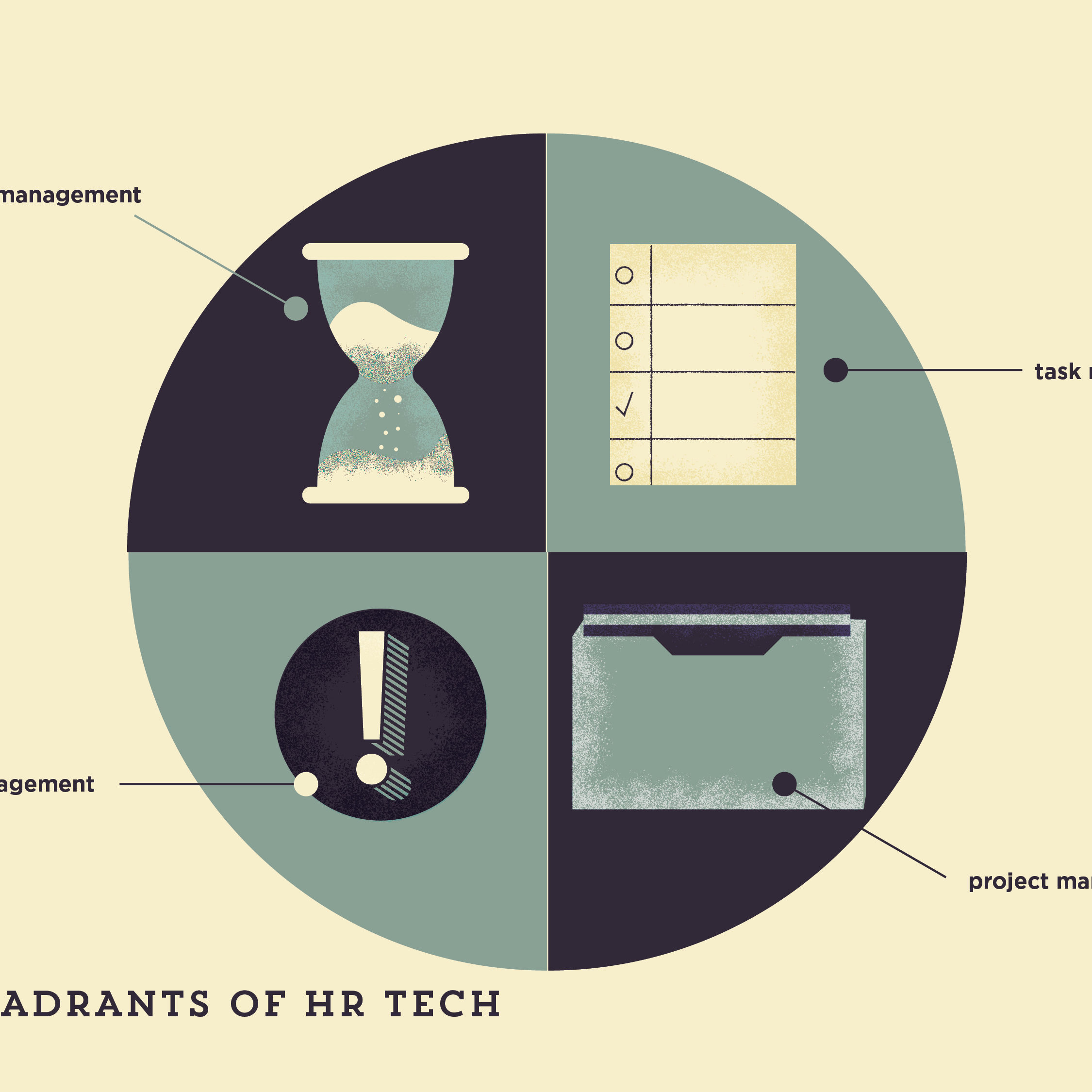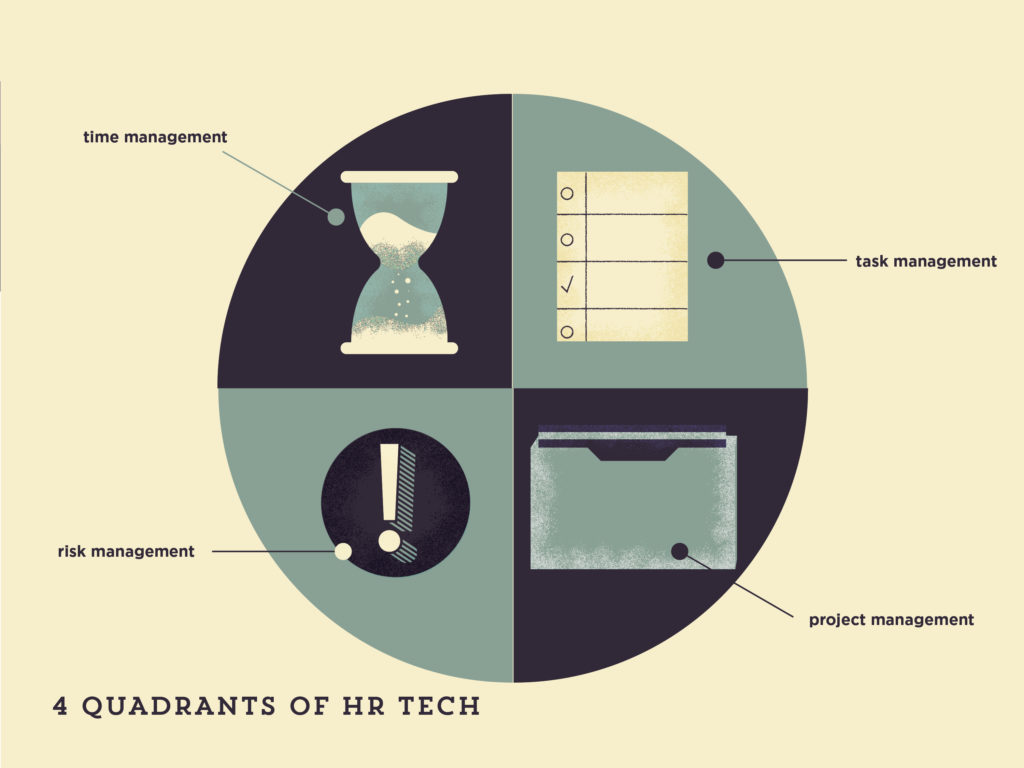

You can’t be a human resources consultant without a model.
For years, I’ve tried to help recruiters and HR practitioners understand technology by referring them to other smart people. I send my friends and colleagues to other consultants who break down complex ideas into clear messages.
But I now have my model for HR technology, and it’s pretty simple. It’s called the Four Quadrants of HR Technology™.
Why did I do it? Because you needed a way to see that all tech — not just HR — should help you do at least one of four things: save time, accomplish tasks, help you manage a project and achieve better outcomes, or alert you to risky situations and offer possible solutions.
So what do my four quadrants of HR technology look like?
Time management is all about the automation agenda. Nobody has time to do human resources, especially HR professionals. If someone is trying to sell you anything from employee scheduling software to a pulse survey, ask how it saves you time over doing the work manually or having a face-to-face conversation.
Task management is so 2004, but it still matters. It’s about being right the first time and delivering flawless service to your clients. If you’re in the market for anything from recruiting software to video interviewing technology, ensure that the software can provide a service better than you. Otherwise, it’s not worth it.
Project management is the bread and butter of HR and recruiting. Whether it’s the performance management process or global feedback surveys, this technology ought to help you enable greater organizational performance. Implementation is crucial, but so is the scope. Beware one platform that says it can do all things for you, and don’t get caught up in the hype cycle of technology. It will break your heart.
Risk management software helps HR professionals create, protect and defend a talent pipeline. It also helps leaders sort through social, political and economic challenges that threaten the current workforce. You need various tools to understand your organization’s health and the threats to your workforce — from employer branding tools to executive compensation analysis technologies. If only these platforms truly delivered predictions that exceed your ability to predict, that would be great. But they’re close. Very close.
So I hope this is a helpful model for you to understand HR technology a little better. If a company is trying to sell you something, just ask the sales team how their tech fits into this quadrant. You can ask how it helps you overcome failure or fail in new ways, too.
More importantly, I hope this model is a useful vehicle for you to have better conversations.
That’s what it’s all about.
Great model Laurie! The amount of digital technologies available to HR Professionals has increased significantly over the past few years. How do feel you about the use of Big Data and predictive analytics to drive hiring decisions, and where do you feel this fits best into your quadrant?
Interesting question Jason. From the model it looks like Laurie would place it under risk management but you could make a case that this area spand all four quadrants, depending on the purpose for which the data is serving. In the future the data could be giving real time feedback and insights to business units in a ‘task management’ way. There’s no question that certain process become more automated as a result of an HR analytics model. This could be the time management factor. Project management has an obvious link with performance information and gathering employee feedback.